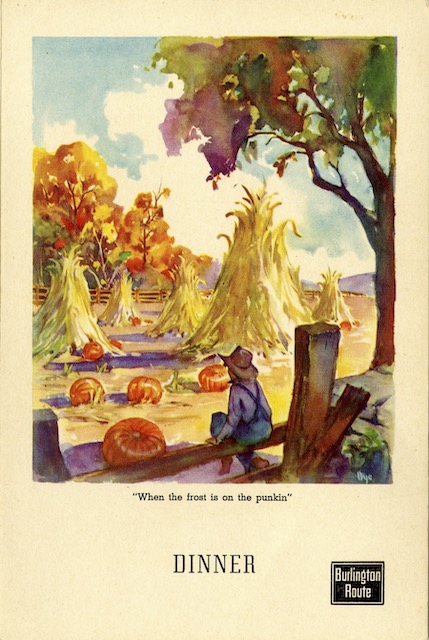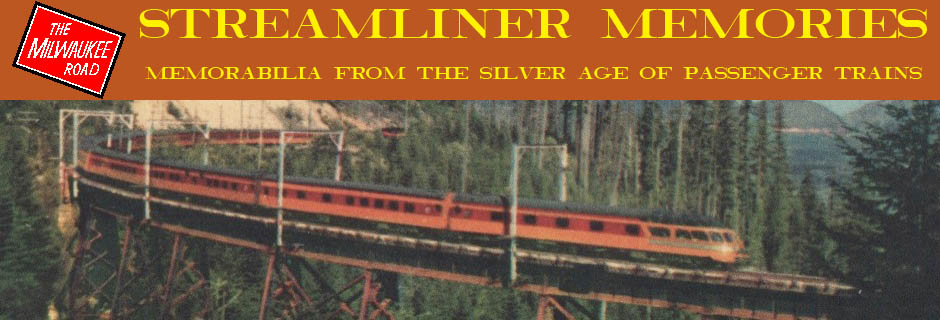The back of this menu reproduces James Whitcomb Riley‘s poem, When the Frost Is on the Punkin, in full. Riley (1849-1916), of course, was the Hoosier poet who wrote in a central Indiana dialect. In 1941, the New York Central named a Chicago-Indianapolis train after him.
 Click image to download a 1.4-MB PDF of this menu.
Click image to download a 1.4-MB PDF of this menu.
The cover painting, which fits the poem well, was by Charles (Charlie) Dye (1906-1963), who later became famous as a cowboy painter in the style of Charles Russell. Born in Colorado, Dye spent his early years working on ranches in several western states while he drew pictures of cowboys and the land around them. In 1927, he decided to become an artist and went to Chicago to study at the Art Institute.
From the early 1930s through the early 1950s, he worked as an illustrator, first in New York City and later in Colorado while he taught art at the Colorado Institute of Art. In 1957, he quit teaching, moved to Sedona, and became a full-time painter. In 1965, he and three other artists formed the Cowboy Artists of America, which still exists. The group gives out a gold medal for best painting each year; he won the first one for his painting of cowboys herding cattle through an aspen forest.
The painting on this menu shows minimal cowboy influence. Though this particular menu was used in 1947, I’ve seen other menus with this cover from the late 1930s. Dye must have made this painting during his illustrator days in Chicago or New York.
Today’s menu was used for a “Golden Gate Pacific All-West Expedition” arranged for the Indiana Farm Bureau and Hoosier Farmer, so the association with Riley is appropriate. The unpriced dinner included vegetable soup, a choice of white fish, fried chicken, or roast pork, potatoes and lima beans, bread, dessert, and beverage.

May this fourth generation Indianapolis born Hoosier issue a slight correction. The NYC “James Whitcomb Riley” ran from Chicago to Cincinnati with a stop in Indianapolis. I rode it many times.